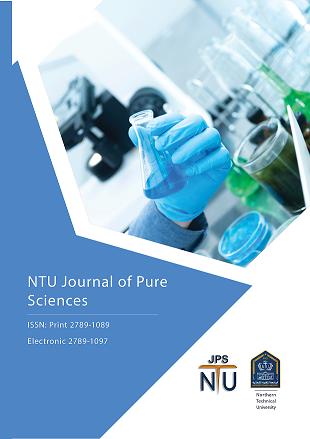Incidence of Hashimoto's thyroiditis and its relationship to age, sex, smoking and blood groups.
DOI:
https://doi.org/10.56286/ntujps.v1i2.175Keywords:
Hashimoto's disease, age, sex, smoking, anti-TPO, anti-Tg.Abstract
This study was aimed to demonstrate the incidence of Hashimoto's disease in Iraqi patients and its correlation to some of the sociodemographic features. The research groups involved (50 patients with Hashimoto?s disease and 50 healthy subjects). All of them were subjected to the estimation of levels of free triiodothyronine (FT3), free thyroxine (FT4), TSH, anti-thyroid peroxidase (anti-TPO), and anti-thyroglobulin (anti-Tg). The results demonstrated that there is a dramatic increase in the occurrence of HT in older patients. The age group (41-50 years old) was the most age group affected by Hashimoto's disease, followed by the age groups (31-40, 21-30, and 9-20 years old) respectively. A significant proportional correlation (R:0.952, P:0.024) was found between HT disease and aging. According to the gender, the results found that the vast majority (82%) of patients were females (P = 0.01). Also, the smoking percent was (40%) of patients. The presence of autoimmune thyroid disease in one or more individuals within the family (family history) was also evaluated and the results found that (28%) of the Hashimoto?s disease group have a positive family history of thyroid autoimmune diseases. It can be concluded from these results that females are more prone to developing Hashimoto?s disease compared to males, in other words, the female gender is a risk factor for the occurrence of autoimmune hypothyroidism. Also, the negative impact of smoking and family history gives an indication that these parameters are independent and don’t associate with Hashimoto?s disease at least in the current study.
Downloads
Downloads
Published
Issue
Section
License
The journal applies the license of CC BY (a Creative Commons Attribution 4.0 International license). This license allows authors to keep ownership of the copyright of their papers. But this license permits any user to download, print out, extract, reuse, archive, and distribute the article, so long as appropriate credit is given to the authors and the source of the work. The license ensures that the article will be available as widely as possible and that the article can be included in any scientific archive. Creative Commons License This work is licensed under a Creative Commons Attribution 4.0 International License.





